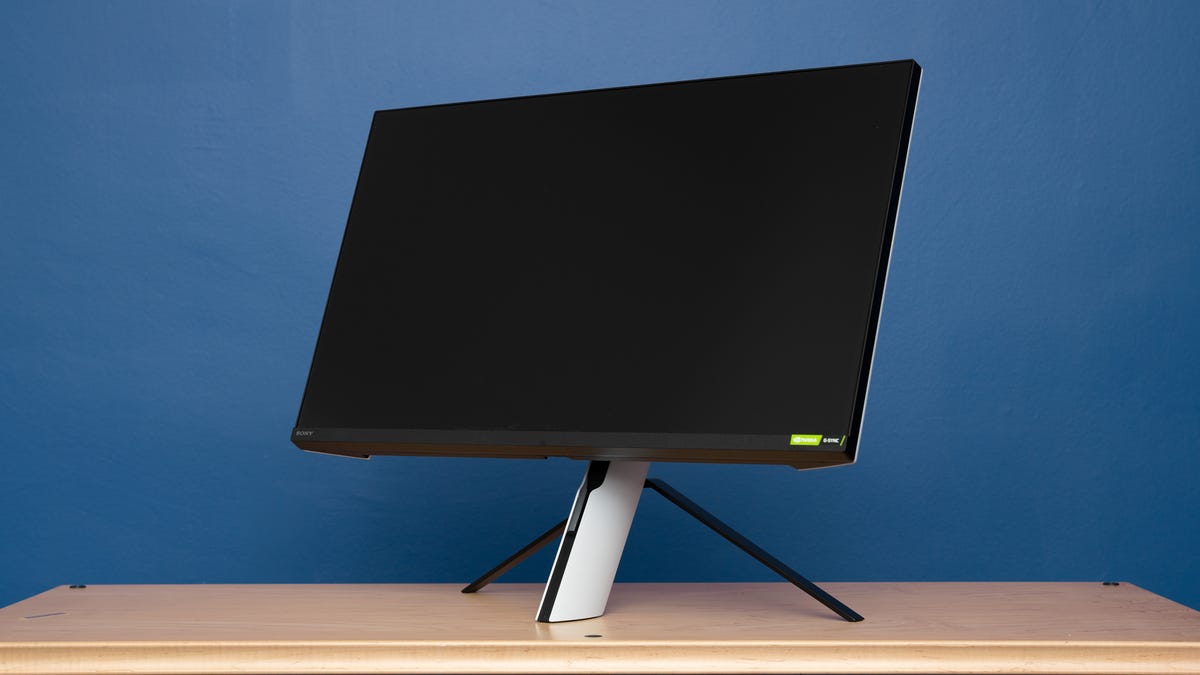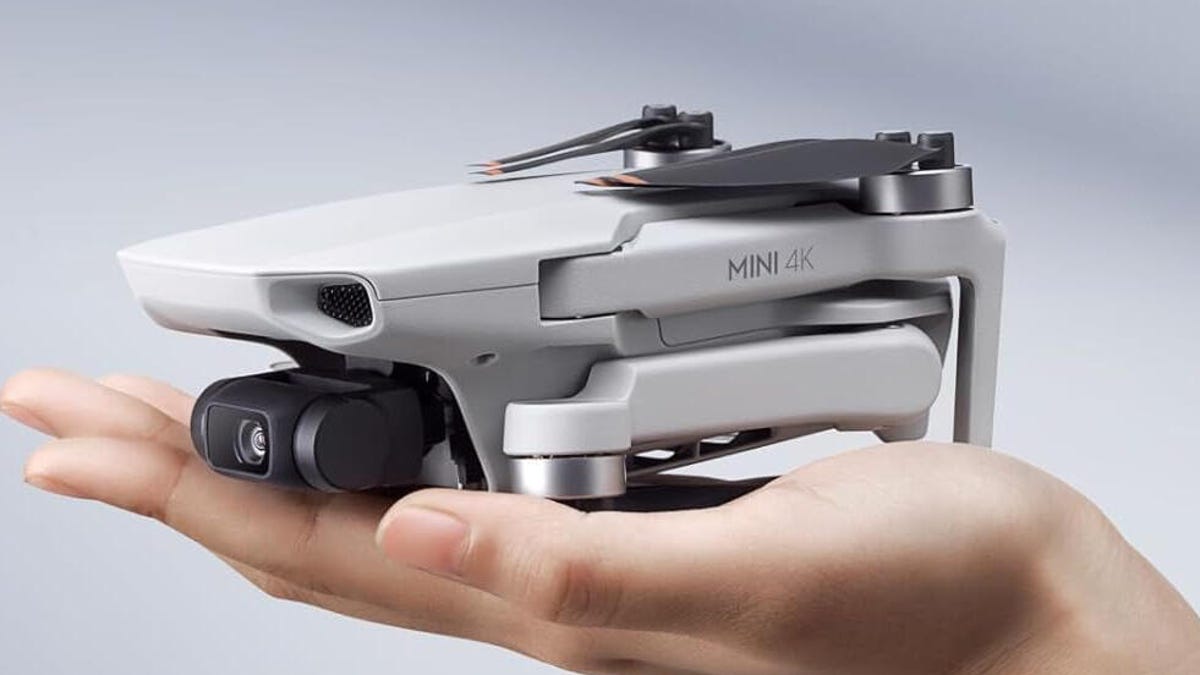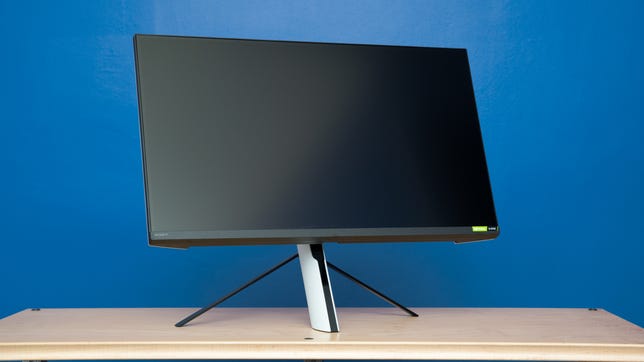Technologies
Sony InZone M3 Review: A Speedy Gaming Monitor for PS5 Plus PC Play
Sony’s lower-end model in its distinctive-looking InZone monitor line delivers a solid, if not standout, performance.

A cheaper, faster sibling of Sony’s $900 InZone M9 4K HDR gaming monitor, the 27-inch InZone M3 incorporates a solid 240Hz 1080p screen for its $530 (£699) price tag. In addition to its unique design, the M3’s most notable novelty is PS5 support for Auto HDR, which maps SDR games to HDR, and Auto Genre picture mode, which switches profiles from game-optimized and low-latency to movie-optimized when you launch them. It also supports HDMI 2.1 which seems like overkill for a 1,920 x 1,080 (FHD), barely HDR screen, but future proofing is always welcome — provided it doesn’t add a lot of cost.
Otherwise, the screen is comparable to models like the BenQ Mobiuz EX270M, Acer Nitro XV272, Acer Predator XB273 and a handful of others. They’re older models but slightly cheaper and lack the HDMI 2.1 and the PS5 automation. The M3 is discounted through early April to just below $500, which brings it more into line with the competition. (The M9 is also discounted over the same period, for $100 off its standard $900 price.)
Like
- HDMI 2.1 with VRR support for PlayStation
- Good sRGB accuracy
Don’t Like
- Looks good but the connection locations and cable management aren’t
- Awkward stand that doesn’t swivel
It has an identical design to the M9, which means it’s equally annoying. Striking, since it uses similar materials to the PS5 but with a more angular aesthetic common to PC gaming displays, but awkward. The metal rear legs of the stand don’t look substantial, though they are.
Sony InZone M3 (SDMF27M30)
| Price | $530 |
|---|---|
| Size (diagonal) | 27 in. (69 cm) |
| Panel and backlight | IPS with LED edgelight |
| Flat or curved | Flat |
| Resolution and pixel density | 1,920 x 1,080 81.6ppi |
| Aspect ratio | 16:9 |
| Maximum gamut | 99% sRGB |
| Brightness (nits, peak/typical) | 400/400 |
| HDR | DisplayHDR 400 |
| Adaptive sync | G-Sync |
| Max vertical refresh rate | 240Hz (DisplayPort and HDMI) |
| Gray/gray response time (milliseconds) | 1ms (overdrive) |
| Connections | 2 x HDMI 2.1, 1 x DisplayPort 1.4, 1 x USB-C (with DP) |
| Audio | 3.5mm out |
| VESA mountable | Yes, 100 x 100 mm |
| Panel warranty | 1 year |
| Release date | January 2023 |
There’s a tiny plastic hook that can hang off one of the thin legs through which you’re supposed to feed your cables. It’s not large enough to accommodate a few thick ones though and really feels flimsy. And while setup is straightforward, it’s unnecessarily inelegant. You need a screwdriver and the included loose screws to attach the legs — at the very least make them captive — and it’s hard to insert the connections because they’re in a recess that requires some contortion to get them into, especially if you have stiff, thick cables.


That slanted leg is striking looking, but not very practical.
Lori Grunin/CNETThat unusual slanted foot also makes it notably difficult to get to the DisplayPort connection and prevents the screen from being able to tilt forward. Most stands let you tilt about 5 degrees toward you, which can come in handy if you’re trying to avert glare. The design also precludes swiveling, which is annoying in a multimonitor configuration and doesn’t allow for putting things on your desk beneath the screen, such as shoving your keyboard there.
It really begs to be mounted on an arm, but at that point it looks pretty much the same as every other monitor out there.


The connectors are in one of those traditional, hard-to-reach recesses in the back of the screen.
Lori Grunin/CNETIn addition to the dual HDMI 2.1 connections, it also supports USB-C for display. It’s got stereo two-watt speakers, which sound about as good as you’d expect; that is, if you expect them to sound tinny and low volume and only good for simple system sounds.
I thought Sony would have fixed the small irritation in the onscreen display, where it defaults to one of the least-needed menu entries — DDC on/off, and a level down — which makes navigating through the menus tedious if you have to do it a lot. Thankfully, everything in the OSD is accessible via Sony’s pretty well designed InZone Hub software.
Like the M9, the M3 has a built-in KVM switch, which means the USB ports depend upon the active input. That’s a perk if you’re connecting to two different systems or a PC and a console, and easy to set up in the software. The input scanning looking for an active connection seems to take a little longer than normal, though, and I got some unexpected resets (where it decides to recheck its connection) — such as between benchmark tests — that I’ve only seen with the Sonys.
Performance
The monitor performs well, with solid behavior at 240Hz and what seems like is the claimed 1ms gray-to-gray pixel refresh, and delivers excellent sRGB color accuracy in its Standard and Game 2 profiles but not in its default Game 1. (How we test monitors.)
Color measurements
| Gamut (% of P3) | White point | Gamma | Brightness (nits) | Accuracy (DE2K average/max) | |
| Default (Game 1) | 82 (111% sRGB) | 7800K | 2.3 | 245/360 (peak) | 3.83/8.3 |
| sRGB (Standard) | n/a (111% sRGB) | 6300K | 2.2 | 265 | 1.92/5.07 |
| Cinema | 82 | 6300K | 2.4 | 337 | n/a |
| HDR | 87 | 6450K | n/a | 473 (10% and full screen) | n/a |
It nominally supports high dynamic range — it’s DisplayHDR 400 certified — but that just means it has a little extra brightness headroom and can do the math needed to display HDR content or map SDR to HDR. It doesn’t make that much of a visual difference, partly because the black isn’t dark enough. The best contrast it could hit was about 2500:1, which is good in general but not great for HDR. On the bright side, I didn’t see any light bleed around the edge as is common with edgelit backlights.
Game mode measurements
| White point | Gamma | Brightness | Contrast (static) | |
| FPS | 7850K | 2.1 | 304 nits | 861 |
| Game 2 | 6300K | 2.2 | 267 nits | 1185 |
I’m not a huge fan of 27-inch 1080p screens for nongaming use because of their low-pixel density, only about 82 pixels per inch, because even my aging eyes object to the visible pixel grid. But it’s okay for gaming because there are rarely any single-pixel-wide lines. If you want something for long workdays as well as gaming, and you don’t need the 240Hz or HDMI 2.1 (you can still use it with a console), do your eyes and wallet a favor and get a 2,560 x 1,440 (1440p) 165Hz model.
It’s a pretty good monitor, but the InZone M3’s screen doesn’t distinguish it from the small pack of 240Hz 1080p options and its stand doesn’t help make a case for it. Overall, it’s a solid choice, especially if you can find it for a more competitive price.
The best laptops in every category
- Best Laptop for 2023
- Best Windows Laptops
- Best Laptop for College
- Best Laptop for High School Students
- Best Budget Laptop Under $500
- Best Dell Laptops
- Best 15-Inch Work and Gaming Laptops
- Best 2-in-1 Laptop
- Best HP Laptops
- Best Gaming Laptop
- Best Cheap Gaming Laptop Under $1,000
- Best Chromebook: 8 Chromebooks Starting at Under $300
Technologies
What a Ban Would Actually Mean for DJI Drone Owners and Holiday Shoppers
What’s the secret to a very un-merry shopping season? A brand new, unusable drone.

With Thanksgiving wrapped up and the Black Friday shopping sales here, if a DJI drone is on your holiday wish list, you might want to hit «buy» immediately. The company has issued a stark warning: Its drones could be banned from sale in the US, and the deadline is looming.
The Federal Communications Commission voted 3-0 at the end of October to «close loopholes» that allow tech deemed a «national security risk» to be sold in the US. In plain English, the US government is clearing the path to give DJI the same treatment it gave Chinese phone-maker Huawei, effectively banning its products from the American market.
The US government has deemed DJI, which is based in China, a security risk. It’s also considering a separate ban on TP-Link routers.
DJI is already sounding the alarm, posting on Instagram that a «deadline that could decide DJI’s fate in the US is just 43 days away» (now 19 days away). The company is warning that without an audit, its products could face an «automatic ban.» The US government has long labeled the Chinese drone maker a security risk, and it looks like the hammer might finally be coming down right before the holidays.
Don’t miss any of our unbiased tech content and lab-based reviews. Add CNET as a preferred Google source.
The vote isn’t the end of the road, however. Future bans would need to target specific products and would require a period of public consultation. But it appears the groundwork is being set for the FCC to block sales of future and some existing DJI drones from US shores, as well as products that use DJI technology.
The government has called for a DJI audit by the end of the year, but if that doesn’t happen, DJI drone products could be banned for sale by default under a national security law.
DJI asks for a security audit before any ban
A representative for DJI told CNET that while the FCC vote references a rule change that doesn’t currently apply to DJI specifically, the National Defense Authorization Act deadline in December would put Chinese companies like it on the FCC’s ban list, «without any evidence of wrongdoing or the right to appeal.»
Adam Welsh, head of global policy at DJI, said the company has repeatedly said it would be open to audit, but that «more than 10 months have now passed with no sign that the process has begun.»
«The US government has every right to strengthen national security measures, but this must go hand in hand with due process, fairness, and transparency,» Welsh said.
Welsh said DJI is urging the government to start the audit process or grant an extension.
Will DJI drone owners need to give them up?
Because the ban would apply to new sales, not drones that have already been sold, a DJI drone you already own would still be legal to use — at least under current rules.
Government agencies, however, are prohibited from purchasing or using drones from Chinese companies, including DJI.
DJI’s drones consistently rank high in their product category. In January, they dominated CNET’s list of best drones for 2025. But some of the company’s newest products, such as the DJI Mavic 4 Pro, haven’t been available for sale in the United States.
Even DJI products that are not yet banned may be hard to find. The website UAV Coach has posted a guide to the bans and reports that, due to inventory issues, most DJI drone models are sold out at retailers regardless of future FCC action.
Technologies
Today’s NYT Strands Hints, Answers and Help for Nov. 29 #636
Here are hints and answers for the NYT Strands puzzle for Nov. 29, No. 636.

Looking for the most recent Strands answer? Click here for our daily Strands hints, as well as our daily answers and hints for The New York Times Mini Crossword, Wordle, Connections and Connections: Sports Edition puzzles.
Today’s NYT Strands puzzle is a real puzzler. Some of the answers are difficult to unscramble, so if you need hints and answers, read on.
I go into depth about the rules for Strands in this story.
If you’re looking for today’s Wordle, Connections and Mini Crossword answers, you can visit CNET’s NYT puzzle hints page.
Read more: NYT Connections Turns 1: These Are the 5 Toughest Puzzles So Far
Hint for today’s Strands puzzle
Today’s Strands theme is: What a piece of work!
If that doesn’t help you, here’s a clue: You can build it in a shop.
Clue words to unlock in-game hints
Your goal is to find hidden words that fit the puzzle’s theme. If you’re stuck, find any words you can. Every time you find three words of four letters or more, Strands will reveal one of the theme words. These are the words I used to get those hints but any words of four or more letters that you find will work:
- CREW, REAM, LANE, WHEE, DELL, CANE, PULL, REVEL
Answers for today’s Strands puzzle
These are the answers that tie into the theme. The goal of the puzzle is to find them all, including the spangram, a theme word that reaches from one side of the puzzle to the other. When you have all of them (I originally thought there were always eight but learned that the number can vary), every letter on the board will be used. Here are the nonspangram answers:
- WHEEL, AXLE, LEVER, WEDGE, PLANE, PULLEY, SCREW
Today’s Strands spangram
Today’s Strands spangram is SIMPLEMACHINE. To find it, start with the S that’s three letters to the right on the top row, and wind over and down.
Technologies
Today’s NYT Connections Hints, Answers and Help for Nov. 29, #902
Here are some hints and the answers for the NYT Connections puzzle for Nov. 29, #902.

Looking for the most recent Connections answers? Click here for today’s Connections hints, as well as our daily answers and hints for The New York Times Mini Crossword, Wordle, Connections: Sports Edition and Strands puzzles.
Today’s NYT Connections puzzle is tough. If you need help sorting them into groups, you’re in the right place. Read on for clues and today’s Connections answers.
The Times now has a Connections Bot, like the one for Wordle. Go there after you play to receive a numeric score and to have the program analyze your answers. Players who are registered with the Times Games section can now nerd out by following their progress, including the number of puzzles completed, win rate, number of times they nabbed a perfect score and their win streak.
Read more: Hints, Tips and Strategies to Help You Win at NYT Connections Every Time
Hints for today’s Connections groups
Here are four hints for the groupings in today’s Connections puzzle, ranked from the easiest yellow group to the tough (and sometimes bizarre) purple group.
Yellow group hint: Middle of the body.
Green group hint: Fill-in.
Blue group hint: Nice place to hang out.
Purple group hint: Card game.
Answers for today’s Connections groups
Yellow group: Abdominal area.
Green group: Replacement.
Blue group: Park staples.
Purple group: Blackjack terms.
Read more: Wordle Cheat Sheet: Here Are the Most Popular Letters Used in English Words
What are today’s Connections answers?
The yellow words in today’s Connections
The theme is abdominal area. The four answers are core, midsection, torso and trunk.
The green words in today’s Connections
The theme is replacement. The four answers are backup, cover, relief and substitute.
The blue words in today’s Connections
The theme is park staples. The four answers are bench, pigeon, statue and tree.
The purple words in today’s Connections
The theme is blackjack terms. The four answers are bust, hit, split and stand.
-

 Technologies3 года ago
Technologies3 года agoTech Companies Need to Be Held Accountable for Security, Experts Say
-

 Technologies3 года ago
Technologies3 года agoBest Handheld Game Console in 2023
-

 Technologies3 года ago
Technologies3 года agoTighten Up Your VR Game With the Best Head Straps for Quest 2
-

 Technologies4 года ago
Technologies4 года agoBlack Friday 2021: The best deals on TVs, headphones, kitchenware, and more
-

 Technologies4 года ago
Technologies4 года agoVerum, Wickr and Threema: next generation secured messengers
-

 Technologies4 года ago
Technologies4 года agoGoogle to require vaccinations as Silicon Valley rethinks return-to-office policies
-

 Technologies4 года ago
Technologies4 года agoOlivia Harlan Dekker for Verum Messenger
-

 Technologies4 года ago
Technologies4 года agoiPhone 13 event: How to watch Apple’s big announcement tomorrow

